Paw Paw (Post Preview) and Refugia Info
An announcement and sneak peak of upcoming posts and re-wilding, endangered species Refugium and seed sharing initiatives
Paw Paw trees (Asimina Triloba) are Turtle Island's largest indigenous fruit and this species will be the focus of a future installment of my Stacking Functions in the Garden, Food Forest and Medicine Cabinet series.
For those that are not aware, Pawpaws are very nutritious fruits. They are high in vitamin C, magnesium, iron, copper, and manganese. They are a good source of potassium and several essential amino acids, and they also contain significant amounts of riboflavin, niacin, calcium, phosphorus, and zinc (more on this in my future Paw Paw article).
I am excited to be able to scale up our re-wilding, wild tending, seed spreading efforts here in the Carolinian Forests of Ontario thanks to this beautiful Paw Paw (Asimina Triloba) tree (and her neighboring trees). The tree in this pic below (and her neighbors) were grown from seed (some seeds from Baker Creek and some I saved from a wild tree). She is part of our Carolinian Forest Refugia project.
Here in southern Ontario (where 98-99% of the Carolinian Forest canopy has been chopped down in the name of "progress") understory species species like Bloodroot (Sanguinaria canadensis), Ramps (Allium tricoccum), Asarum canadense (commonly known as Canada wild ginger), and Paw Paw (Asimina triloba) are having a really tough time and becoming endangered. Thankfully, with a little tlc, some careful observation and patience I am starting to see my wild tending and propagation of these species (in the few Carolinian forest patches that are left around here) gaining traction (setting down roots) and paying off (ecologically and from a cultivating for future responsible foraging perspective) big time.
I also cultivate all four of those species in our young urban food forest so I use that as a seed "Refugium" for scaling up seeds to spread in the forests nearby.
(for more info on the Refugia/Refugium concept: https://thedruidsgarden.com/2016/01/08/wildtending-refugia-and-the-seed-arc-garden/ )
For more information on wild tending endangered species and creating a seed refugium I suggest reading "Tending the Wild" (published in 2013 by M Kat Anderson) and "Trees of Power: Ten Essential Arboreal Allies" (published in 2019 by Akiva Silver).
I have been working for years to gather seeds from endangered species (such as Paw Paws, Ramps/Allium tricoccum and Asarum canadense/Canadian wild ginger) that also provide abundant food and medicine in our urban food forest so that our garden can serve as a fractal ecological healing nexus, expanding outwardly with seeds, rhizomes and cuttings I take to help the forests nearby regenerate and expand. I did not have a word to describe my efforts in this regard until reading Dana O'Driscoll's wonderful book (Land Healing) so now I gratefully refer to this as our Refugia (or Refugium) project.
Here is an excerpt from the Post by Dana linked above re: the concept of Refugia:
Refugia
Refugia is a concept discussed by E. C Pielou in After the Ice Age: The Return of Life to Glaciated North America among other places. In a nutshell, refugia (also called “fuges”) are small pockets of life that were sheltered from broader happenings on the earth that destroyed a lot of other places. In terms of Pielou’s work, refugia were small pockets of life that were for various reasons from the worst of the effects of the last ice age when the rest of the lands were barren and covered in ice. These isolated pockets survived as a sheltered spot, a microclimate, a high point, and so on. When the glaciers receded and left a bare landscape devoid of topsoil or life, it was these refugia that allowed life to spread outward again, repopulating areas in North America covered by glaciers. Of course, Refugia aren’t limited to North America–they are a worldwide phenomenon, and even our human ancestors, at various points in our history, have used them to survive challenging environmental conditions.
In the Anthropocene, that is, the time of human-dominated ecological change we are currently all experiencing, things are a bit different than in glacial North America. But things are not as different as you might think. For one, the loss of biodiversity and essentially inhospitable landscape can pretty much sum up the 40,000,000 acres of lawns currently in cultivation (in the US alone), the 914,527,657 acres of conventional farmland (in the US), and the amount of concrete and houses taking up land (statistics for which I cannot find). We also have wild areas that have been subject to pillaging and resource mining–these areas are a lot less diverse than they once were. The spaces that aren’t being actively pillaged likely are recovering from pillaging (at least where I live out here) or are subject to other duress–and the few spaces that are supposedly “safe” and “protected” are constantly under threat from new bills or legislation, logging, mining, etc.. And so, we have a situation where a biological life, generally, has a lot less space to grow and thrive unhindered. As my post described earlier, we have evidence of the loss of biodiversity in a wide range of ways.
Given this, I believe that the concept of refugia is a useful one to consider–and even enact–given the circumstances that we have going on here now. A lot of us don’t have control over what is happening in the land around us, but we can work to help cultivate small spaces of intense biodiversity, spaces that preserve important plant species, then we can put more of the building blocks back into nature’s hands for the long-term healing of our lands.
Creating Refugia: Goals
We can cultivate refugia in cultivated/human-dominated spaces (like lawns, etc), or we can create them in wild spaces (forests, wild fields) that we know will be safe for some time. Today I’ll mainly be talking about cultivating refugia on a small piece of property, and at a later point, will return to cultivating refugia in wild spaces.
In the permaculture and organic gardening communities, people have been long creating spaces that are intensely planted, that may be perennial or annual in nature, but they might be doing them with different goals. Most often in permaculture practice, the goals are intensely focused on the site–the goal of bringing a degraded piece of land back into healthy production, with a range of yields, some of which are beneficial to humans, and some of which are beneficial to other life. In other words, permaculture designers often use a kind of sanctuary model. For organic farmers, they may have many of the same goals, but different (more annual) means; both may be interested in some economic benefits as well.
Working to actively create refugia can add and complement these existing goals in the sense that we are creating a protected place (physically and magically) that is richly biodiverse with the idea that this biodiversity can spread if given the opportunity (or if we spread it ourselves–you might be able to see where I’m going with this!).
I would like to suggest that each of us, as we are able, create biologically diverse refugia–small spaces, rich in diversity and life, that can help our lands “weather the storm” and a place where we can grow seeds, nuts, and roots to scatter far and wide. Or if we are already cultivating biologically diverse gardens, homesteads, sacred gardens, and the like, we add the goal of becoming refugia to our plans–and plant accordingly. I would like to suggest that we can see this not only as a physical act but as a sacred and spiritual practice. (source)
If any of you are in the range shown in the map in the pic below, you are a paid subscriber to my Substack newsletter, and you would like to attempt to create your own Refugia to help this species begin to gain a foothold in the wild (or increase in numbers) where you live you can leave a comment or email me at recipesforreciprocity@proton.me and i`ll put you on the list for seeds that will be harvested from our (hopefully) abundant 2024 crop.
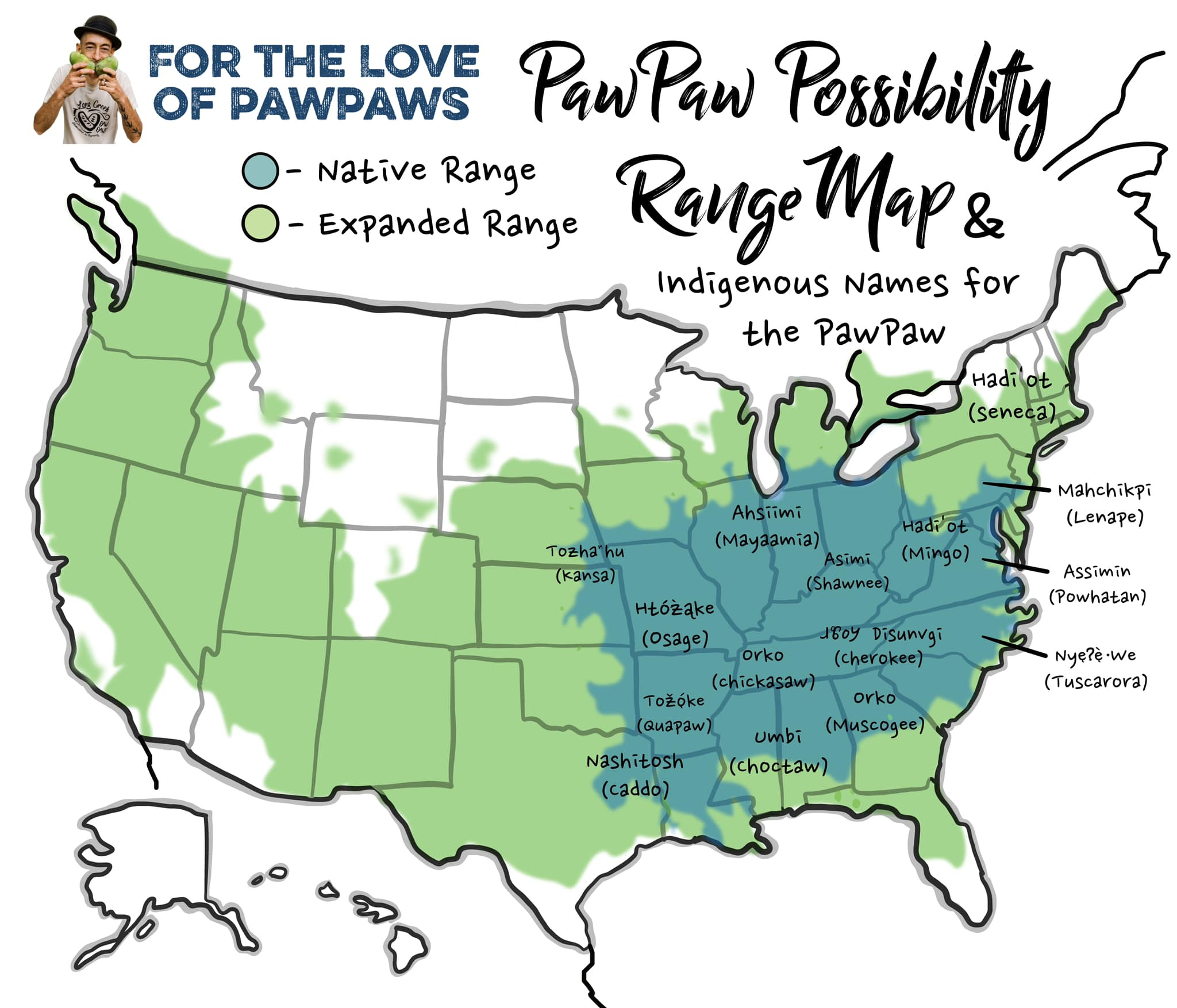
I`ll share some pics that show the tree dormant now, spring 2024 and fruit harvested in 2023 from the same tree:
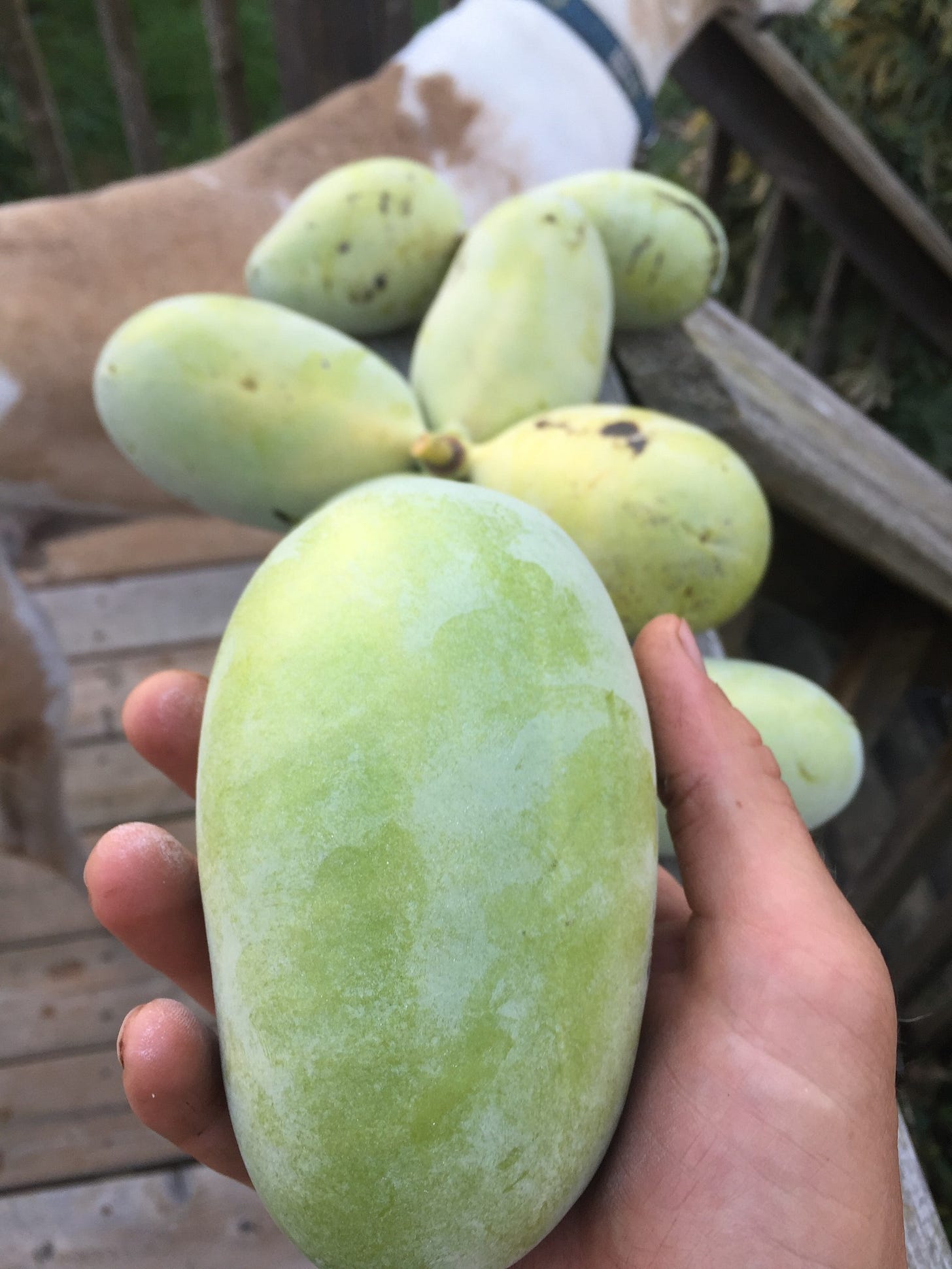
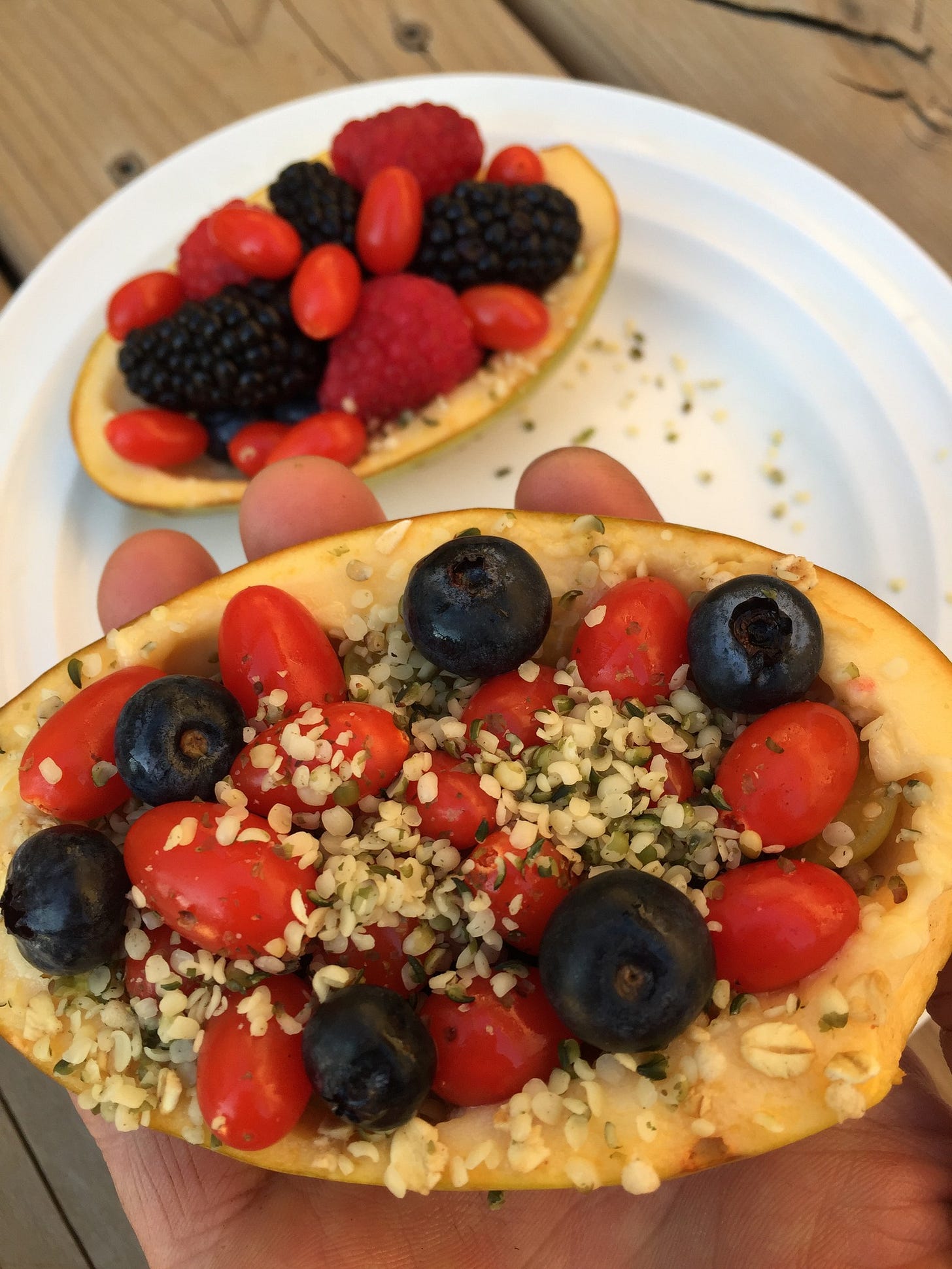
Ok that is it for this sneak peak, I just wanted to let you all know this is one of the projects that I am working on and that every paid subscription/donation is greatly appreciated as it helps me to focus more and more on this type of re-foresting, re-wilding, endangered species wild tending and seed sharing work.
Next month I will be publishing a Stacking Functions in the Garden, Food Forest and Medicine Cabinet installment that will focus on a versitile and powerful medicine plant from the far east/Russia called Five Flavor Fruit (Schisandra chinensis) and then the month after that (May) I will be publishing my Paw Paw article
Update, the article is published and you can read it here:
Paw Paw (Asimina triloba)
Pawpaw is an unbelievable tree and fruit. Imagine a fruit the size of a mango, that smells like the most exotic tropical fruit. Cutting it in half reveals an incredibly sweet, rich, custard-textured flesh that has a flavor profile somewhere between banana, papaya, pear, strawbe…
I hope you are planning for setting up or expanding your gardens this year everyone. The price of food is not gonna be going down, but based on my observation, the quality and variety of grocery store food does continue to go down steadily so there has never been a better time than now to take the leap and get a food/medicine garden going. Whether one is in an apartment or a situation with no soil to plant is there are always ways to begin to cultivate some of your own food and medicine if you get creative and every step in that direction is a meaningful process of learning and enrichment of the mind.
Happy seed starting and garden planning everyone!





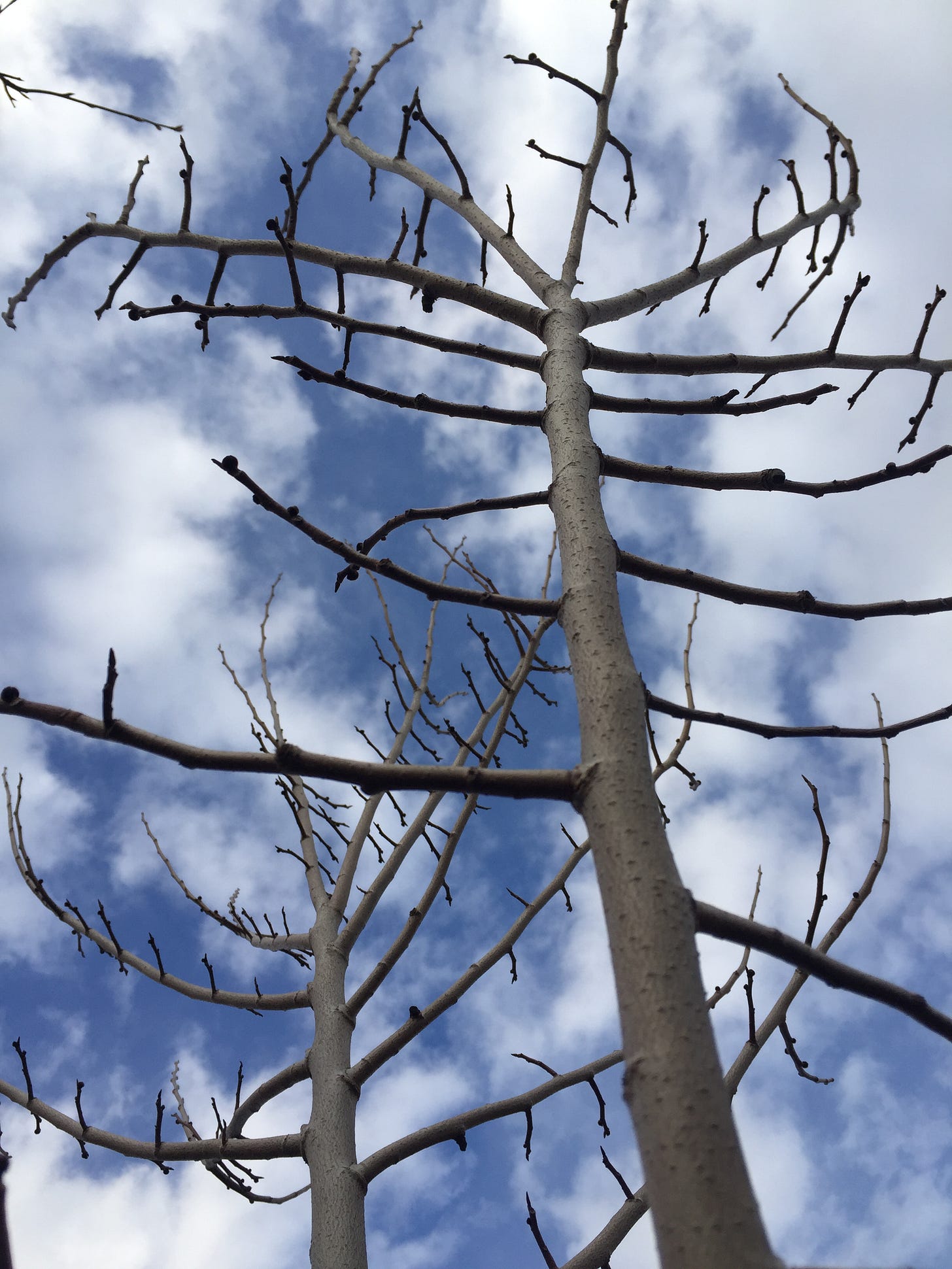
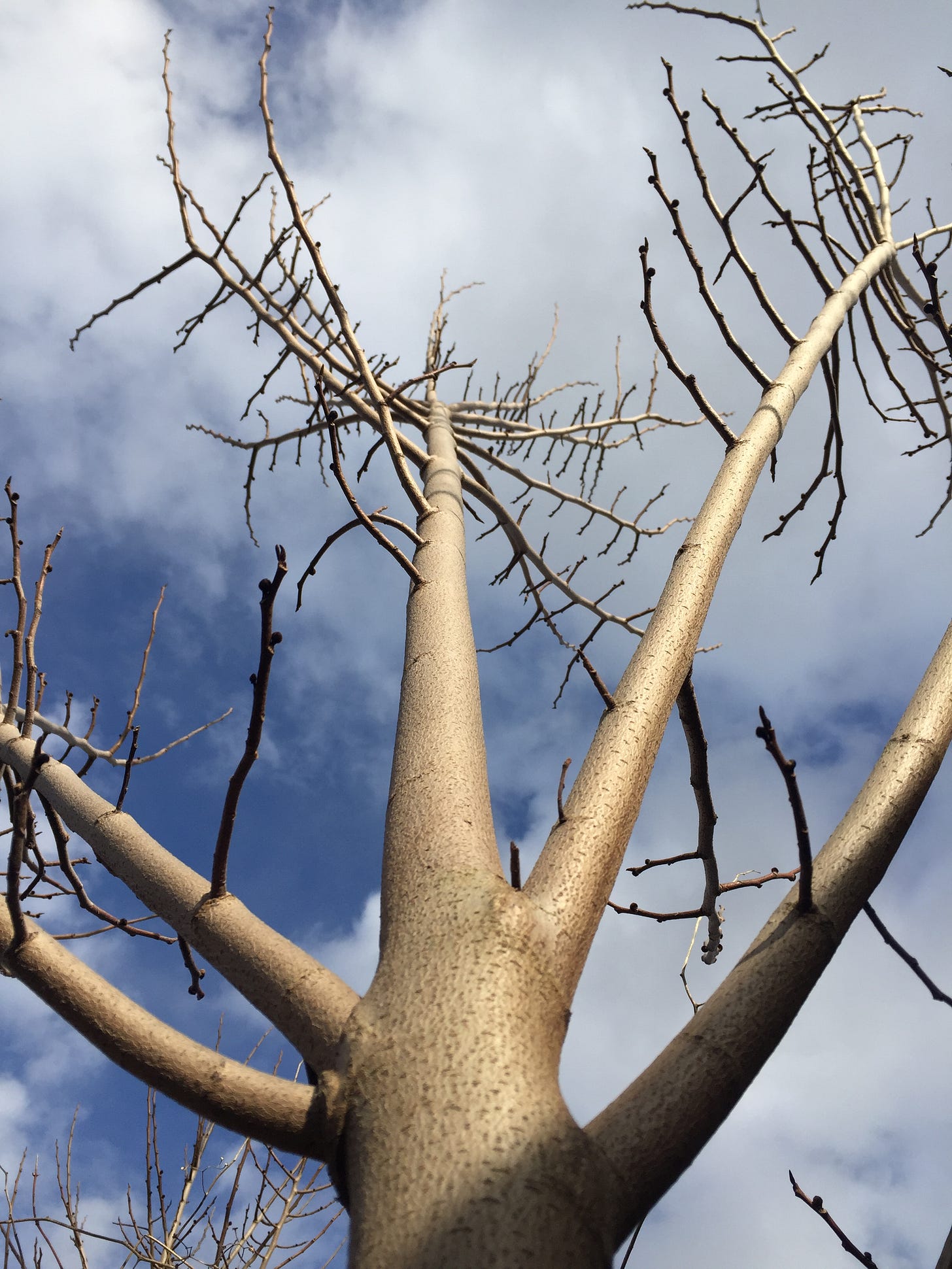
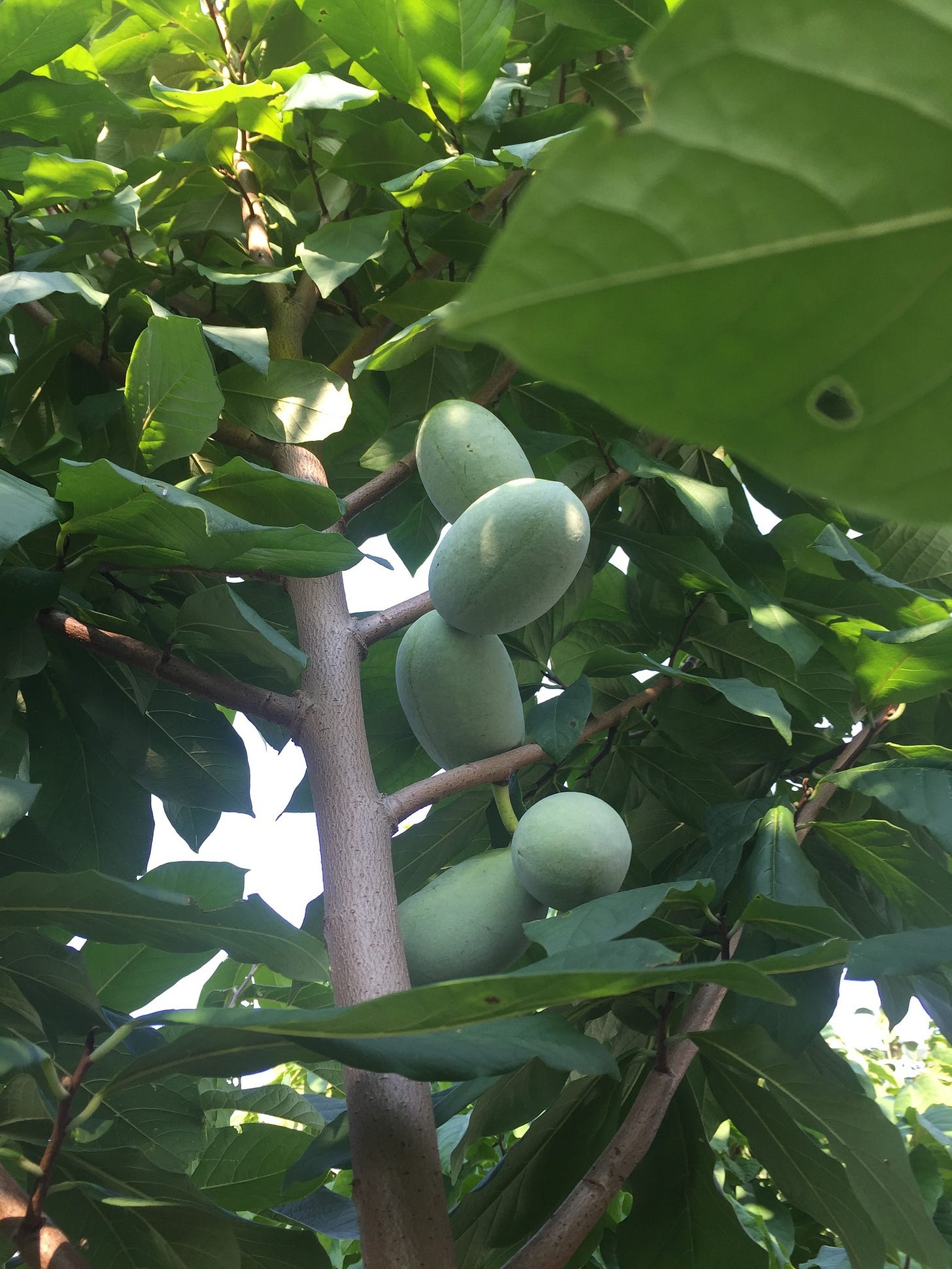
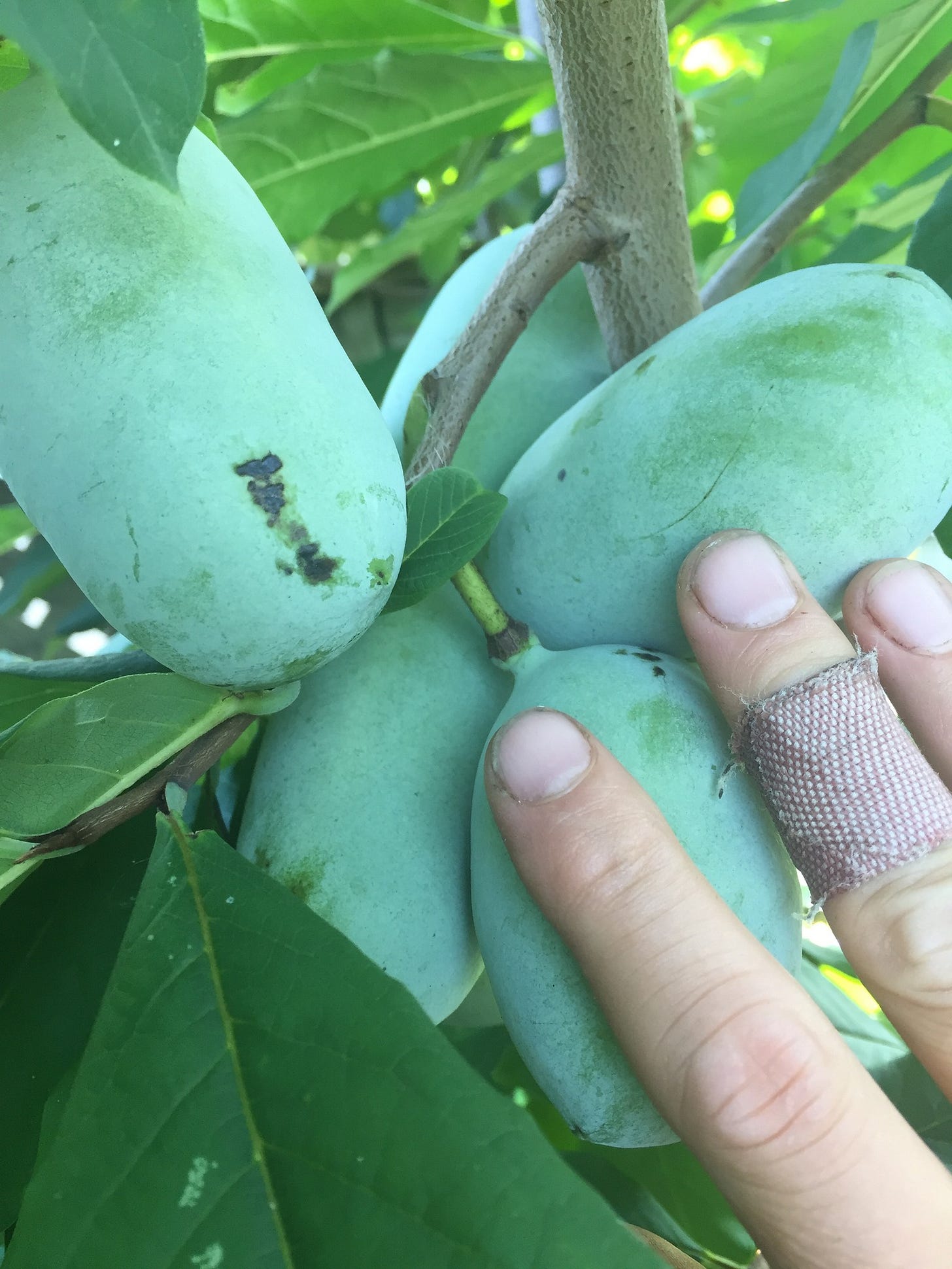
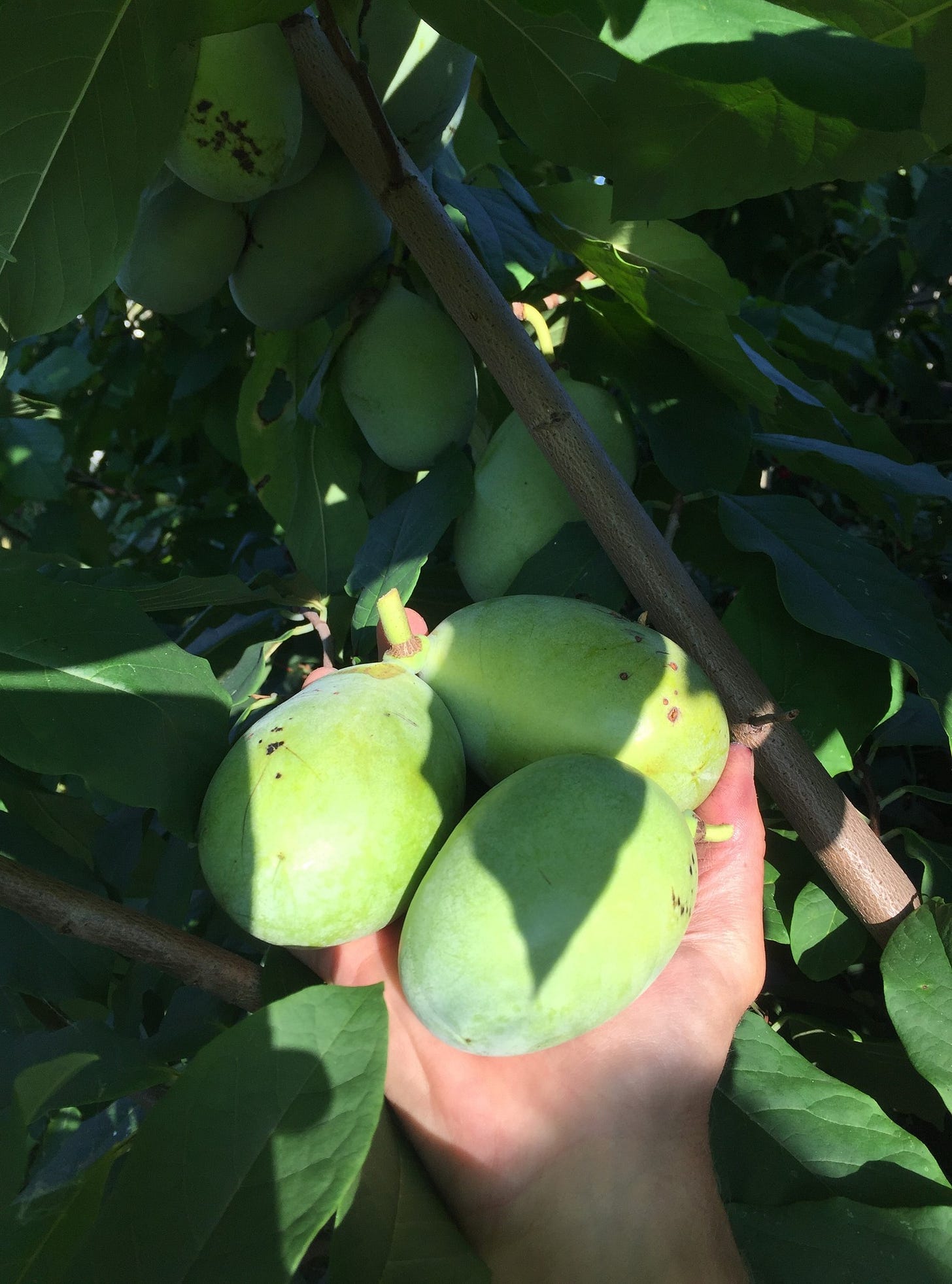
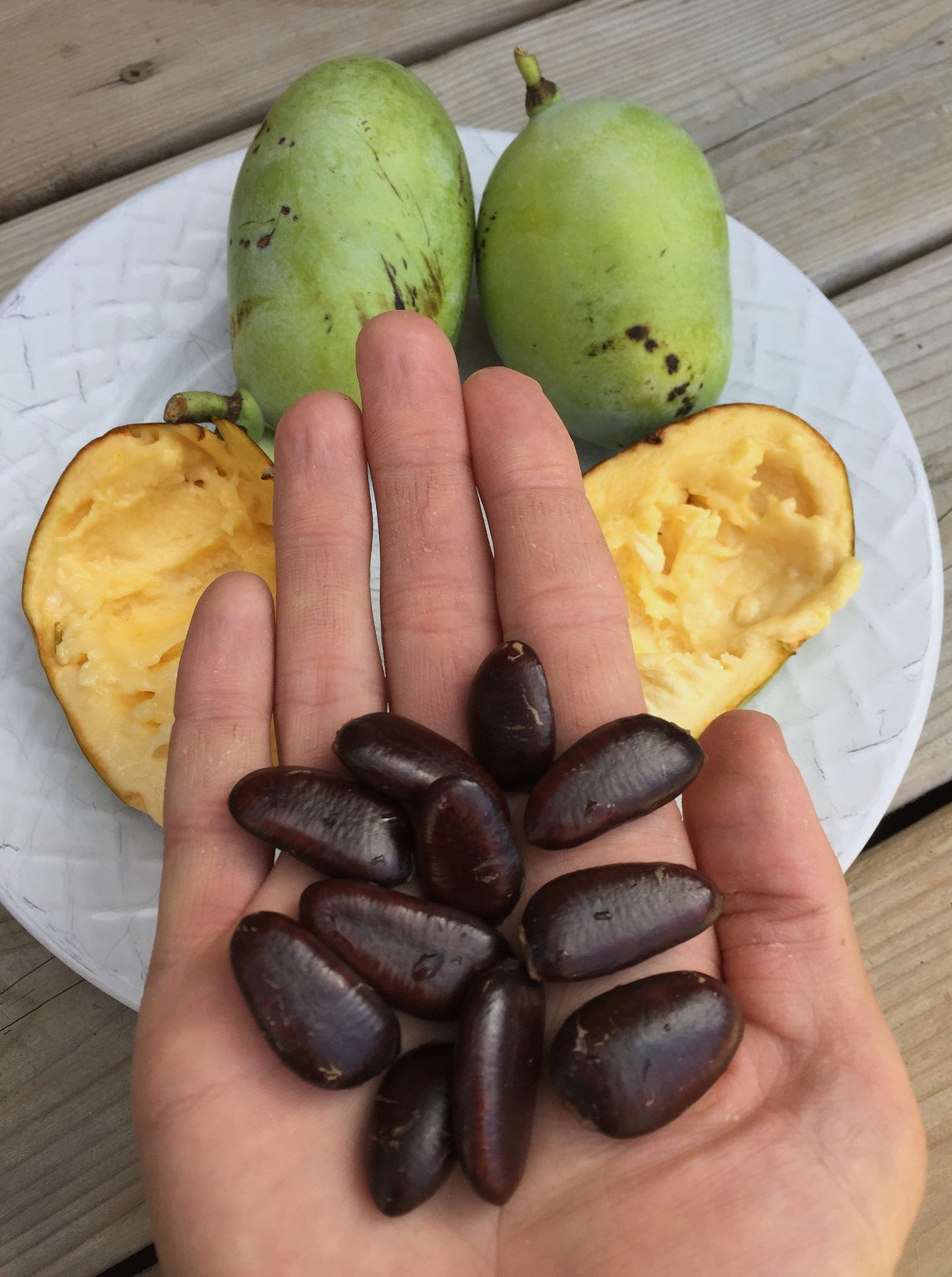
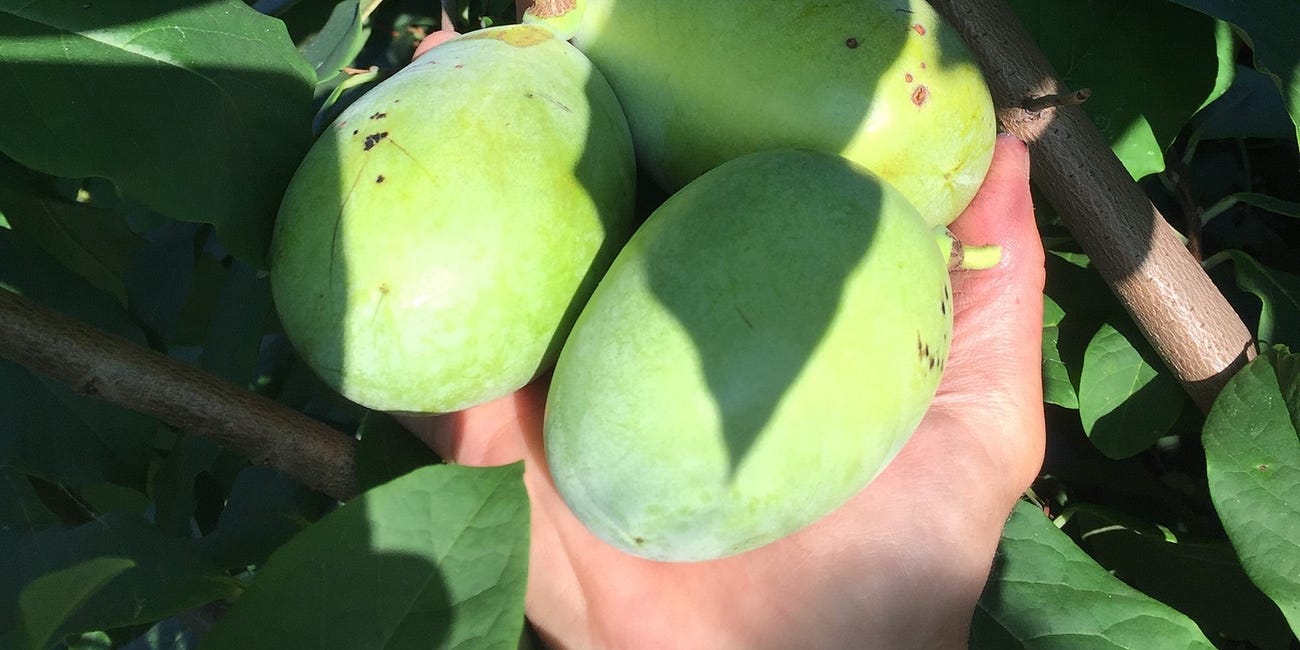
Thank You for this great post, the pictures in particular. I tried very hard to grow this tree, no luck. Got the seeds from Strictly Medicinal > 10 years ago, and tried for couple of years. They just never 'sprouted'... So pity, because the apigenins from these fruits have incredible anti-cancer properties. So much in fact the Purdue Prof. J. L. McLaughlin devoted lot of his entire carrier for that research. More info on it at:
https://www.purdue.edu/uns/html4ever/1997/9709.McLaughlin.pawpaw.html
maybe that's why you wont find theses seeds any more!! Is it possible to buy some from You Gavin?